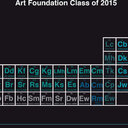Esophagin cDNA cloning and characterization: a tissue-specific member of the small proline-rich protein family that is not expressed in esophageal tumors.
Mots clés
Abstrait
Cancer may be understood as the net effect of differences in gene expression between normal and transformed cells. In a novel direct approach applying this principle, complete genes expressed at altered mRNA levels in malignant versus normal esophageal epithelium were identified and isolated from cDNA libraries. One clone was expressed in normal esophageal mucosae but absent in esophageal carcinomas. By in situ hybridization, Northern blotting, and immunohistochemistry, expression of this gene was restricted to normal esophageal mucosa; it is designated esophagin. Esophagin expression was greatest in the superficial, most mature layers of esophageal squamous mucosa and was restricted to this organ, being undetectable in other squamous epithelia. A genomic clone localized esophagin to chromosomal region 1q21-q22. The expressed protein contains multiple direct repeats of an 8-amino acid motif rich in proline, with significant homology to the cornifin, pig 20K, monkey MT5, and human small proline-rich genes spri and spril. Esophagin constitutes the newest and largest member of this small proline-rich gene family and is associated with differentiation and the benign phenotype of the human esophageal epithelial cell.


